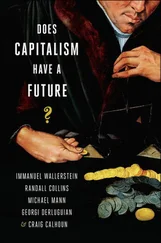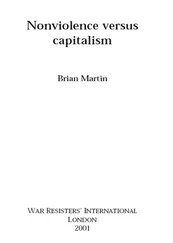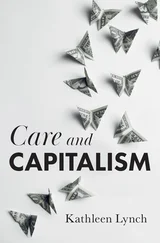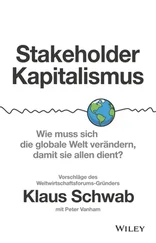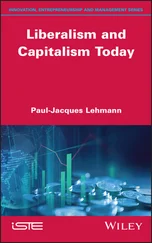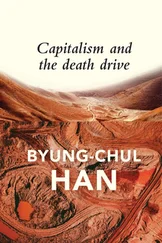“The Silicon Valley of Hardware,” Wired , https://www.wired.co.uk/video/shenzhen-episode-1.
“Exclusive: Apple Supplier Foxconn to Invest $1 Billion in India, Sources Say,” Reuters, July 2020, https://www.reuters.com/article/us-foxconn-india-apple-exclusive/exclusive-apple-supplier-foxconn-to-invest-1-billion-in-india-sources-say-idUSKBN24B2GH.
“Global 500: Ping An Insurance,” Fortune , https://fortune.com/global500/2019/ping-an-insurance.
“The World's Biggest Electric Vehicle Company Looks Nothing Like Tesla,” Bloomberg, April 2019, https://www.bloomberg.com/news/features/2019-04-16/the-world-s-biggest-electric-vehicle-company-looks-nothing-like-tesla.
“How Shenzhen Battles Congestion and Climate Change,” Chia Jie Lin, GovInsider, July 2018, https://govinsider.asia/security/exclusive-shenzhen-battles-congestion-climate-change/.
“China's Debt Threat: Time to Rein in the Lending Boom,” Martin Wolf, Financial Times , July 2018 https://www.ft.com/content/0c7ecae2-8cfb-11e8-bb8f-a6a2f7bca546.
“China's Debt-to-GDP Ratio Surges to 317 Percent,” The Street, May 2020, https://www.thestreet.com/mishtalk/economics/chinas-debt-to-gdp-ratio-hits-317-percent.
“Climate Change: Xi Jinping Makes Bold Pledge for China to Be Carbon Neutral by 2060,” South China Morning Post , September 2020, https://www.scmp.com/news/china/diplomacy/article/3102761/climate-change-xi-jinping-makes-bold-pledge-china-be-carbon.
“Current Direction for Renewable Energy in China,” Anders Hove, The Oxford Institute for Energy Studies, June 2019, https://www.oxfordenergy.org/wpcms/wp-content/uploads/2020/06/Current-direction-for-renewable-energy-in-China.pdf.
“Everyone around the World is Ditching Coal—Except Asia,” Bloomberg, June 2020, https://www.bloomberg.com/news/articles/2020-06-09/the-pandemic-has-everyone-ditching-coal-quicker-except-asia.
“Statistical Review of World Energy 2020,” BP, https://www.bp.com/en/global/corporate/energy-economics/statistical-review-of-world-energy.html.
“World Integrated Trade Solution,” World Bank, 2018, https://wits.worldbank.org/CountryProfile/en/Country/CHN/Year/LTST/TradeFlow/Import/Partner/by-country/Product/Total#.
“China Imports,” Comtrade, UN, 2018, https://comtrade.un.org/labs/data-explorer/.
“Does Investing in Emerging Markets Still Make Sense?” Jonathan Wheatley, The Financial Times , July 2019, https://www.ft.com/content/0bd159f2-937b-11e9-aea1-2b1d33ac3271.
The Great Convergence , Richard Baldwin, Harvard University Press, https://www.hup.harvard.edu/catalog.php?isbn=9780674660489.
“Member States,” ASEAN, https://asean.org/asean/asean-member-states/.
“Total Population of the ASEAN countries,” Statista, https://www.statista.com/statistics/796222/total-population-of-the-asean-countries/.
“Economic Outlook for Southeast Asia, China and India 2019,” OECD, https://www.oecd.org/development/asia-pacific/01_SAEO2019_Overview_WEB.pdf.
“World Economic Outlook: Latest World Economic Outlook Growth Projections,” International Monetary Fund, October 2020, https://www.imf.org/en/Publications/WEO/Issues/2020/09/30/world-economic-outlook-october-2020.
“Vietnam Emerges a Key Winner from the US-China Trade War,” Channel News Asia , https://www.channelnewsasia.com/news/commentary/us-china-trade-war-winners-losers-countries-vietnam-hanoi-saigon-11690308.
“Southeast Asia Churns Out Billion-Dollar Start-Ups,” Bain, https://www.bain.com/insights/southeast-asia-churns-out-billion-dollar-start-ups-snap-chart/.
“India's Economic Reform Agenda (2014–2019), a Scorecard,” Center for Strategic and International Studies, https://indiareforms.csis.org/2014reforms.
“World Economic Outlook,” International Monetary Fund, October 2020, Chapter 1 1 75 Years of Global Growth and Development In the 75 years since the end of World War II, there has been a surge of global economic development. But despite this, the world is living a tale of two realities. On the one hand, we have rarely been as well off as we are today. We live in a time of relative peace and absolute wealth. Compared with previous generations, many of us live long and mostly healthy lives. Our children get to go to school, even often college, and computers, smartphones, and other tech devices connect us to the world. Even a generation or two ago, our parents and grandparents could only dream of the lifestyle many of us have today and the luxuries that come with abundant energy, advances in technology, and global trade. On the other hand, our world and civil society are plagued by maddening inequality and dangerous unsustainability. The COVID-19 public health crisis is just one event that demonstrates that not everyone gets the same chances in life. Those with more money, better connections, or more impressive ZIP codes were affected by COVID at far lower rates; they were more likely to be able to work from home, leave densely populated areas, and get better medical care if they did get infected. This is a continuation of a pattern that has become all too familiar in many societies. The poor are consistently affected by global crises, while the wealthy can easily weather the storm. To understand how we got here—and how we can get out of this situation—we must go back in time, to the origins of our global economic system. We must play back the picture of post-war economic development and look at its milestones. The logical starting point for this is “Year Zero” for the modern world economy: 1945. And there is perhaps no better place from where to tell this story than Germany, for which that year was truly a new beginning.
, p. 9, https://www.imf.org/en/Publications/WEO/Issues/2020/09/30/world-economic-outlook-october-2020.
“India's Harsh Covid-19 Lockdown Displaced at Least 10 Million Migrants,” Niharika Sharma, Quartz India, September 2020, https://qz.com/india/1903018/indias-covid-19-lockdown-displaced-at-least-10-million-migrants/.
“International Literacy Day 2020: Kerala, Most Literate State in India, Check Rank-Wise List,” The Hindustan Times , September 2020, https://www.hindustantimes.com/education/international-literacy-day-2020-kerala-most-literate-state-in-india-check-rank-wise-list/story-IodNVGgy5hc7PjEXUBKnIO.html.
“Chinese Investments in Africa,” Brookings Institution, https://www.brookings.edu/blog/africa-in-focus/2018/09/06/figures-of-the-week-chinese-investment-in-africa/.
“Global Economic Prospects, Sub-Saharan Africa,” The World Bank, January 2019, http://pubdocs.worldbank.org/en/307811542818500671/Global-Economic-Prospects-Jan-2019-Sub-Saharan-Africa-analysis.pdf.


